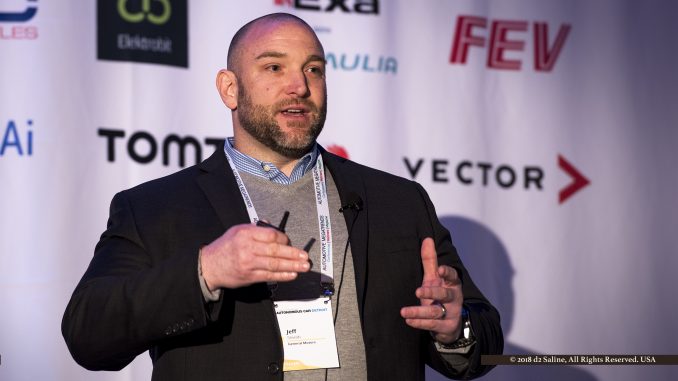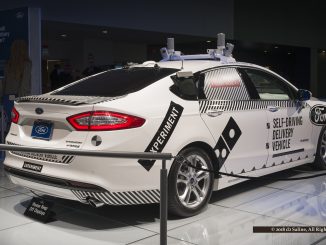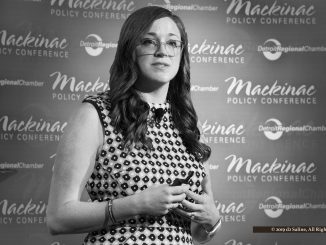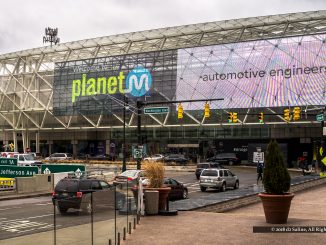
Imagine suggesting this as a solution to one of the top concerns of Saline main street businesses: Eliminate all parking spaces and look for patrons to drive their cars more often. [1,2]
According to the National Association of City Transportation Officials, on-street transit-ways, bus and rail, collectively, have “the highest capacity for moving people in a constrained space,” at anywhere from 10,000 to 25,000 persons per hour. This compares to 600 to 1,600 persons per hour for private motor vehicles. [3]
For the City of Saline this issue is a “last mile problem,” meaning that consumer transportation choices don’t come into play until they are within a one-mile radius of the four-corners, where Michigan Avenue and Ann Arbor Street intersect.
Speakers at the Autonomous Car Detroit conference on March 14 made a compelling case for re-thinking our relationship with transportation itself as the solution. [4,5]
Jeff Shields, Manager for Field Operations with General Motors subsidiary Maven, called this “transportation as a service” (TAAS), or an “ecosystem.” [6]
Imagine a mindset in something approaching ten percent of municipalities by the year 2025 where downtown destinations were accessed by “ridehailing.”
INRIX Parking Services is working on technologies that would provide an interface between lots and drivers to direct them to available parking spaces before they arive in the area. Vehicle control could then be turned over for automated parking managed by RFID, Bluetooth, and near-field communication guidance — with no further human involvement. [7]
“People avoid making trips due to parking,” Nathan Donnell, Director of INRIX Parking Services, advised Autonomous Car Detroit attendees. “If I had a car that could handle parking,” research respondants have told him, “I’d take it out more often.”
The answer, Mr Donnell argued, is the replacement of existing parking spaces with zones dedicated to passenger loading and unloading. Develop TAAS infrastructures where cars are parked in lots on less-than-prime real estate, completing the last leg of their journeys, ultimately, by self-driving shuttles or shared autonomous cars.
Nearer-term, services such as Uber are ready today to complete last-mile transports.
Read “What Cities Need to Know about Consumer Acceptance of Autonomous Vehicles” next week here in the Saline Journal. [8]
References
- “City of Saline Considers Ways To Expand Downtown Parking” Angelo Parlove (September 1, 2017) The Sun Times News.
- “Saline City Council Votes to Fund Downtown Parking Study” Tran Longmoore (March 20, 2018) The Saline Post.
- “Transit Street Design Guide: Designing to Move People” National Association of City Transportation Officials.
- “Autonomous Car Detroit” (March 14, 2018) Automotive Megatrends.
- Maven (home page).
- “The Impact of New Mobility Services on the Automotive Industry” Adela Spulber, Eric Paul Dennis PE, Michael Schultz, and Richard Wallace (September 2016) Center for Automotive Research.
- INRIX (home page).
- “What Cities Need to Know about Consumer Acceptance of Autonomous Vehicles” Dell Deaton (March 30, 2018) Saline Journal.
Hashtag
#AutonomousCarDetroit
#AutonomousVehicles



